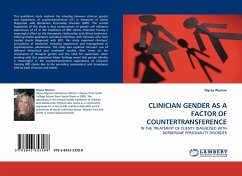
Risk factor profile of major NCDs in adult population of block Hajin
Modified WHOs Stepwise approach
Versandkostenfrei!
Versandfertig in 1-2 Wochen
36,99 €
inkl. MwSt.

PAYBACK Punkte
18 °P sammeln!
To reduce the burden of NCDs, particularly in developing countries, the generation of data should be strengthened by establishing feasible and sound surveillance of these conditions and their risk factors. The surveillance of a more comprehensive list of NCD risk factors is a relatively new area; however, disease surveillance is already being undertaken in many parts of the world, and has been recognized as an important component of prevention and control programmes. Some NCD risk factors are well known, and have been subject to surveillance for a long time(e.g. tobacco), but the exact role th...
To reduce the burden of NCDs, particularly in developing countries, the generation of data should be strengthened by establishing feasible and sound surveillance of these conditions and their risk factors. The surveillance of a more comprehensive list of NCD risk factors is a relatively new area; however, disease surveillance is already being undertaken in many parts of the world, and has been recognized as an important component of prevention and control programmes. Some NCD risk factors are well known, and have been subject to surveillance for a long time(e.g. tobacco), but the exact role that any specific risk factor plays in the causation of ill health in a specific community needs to be considered in depth. This is particularly true with regard to information concerning the cumulative effect of the combination and interaction of different risk factors in a given setting. Thus surveillance of NCD risk factors is recommended in the first step of the World Health Organization (WHO)¿s STEPwise approach to planning for prevention and control of NCDs.












